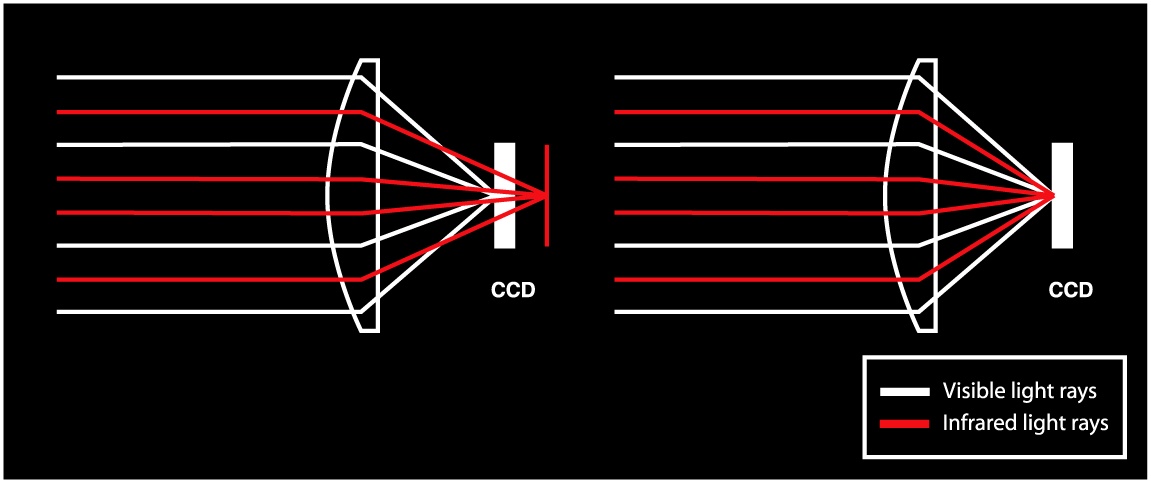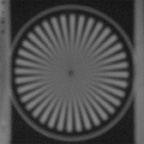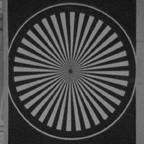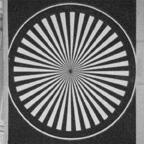By David Craig
|

|
| A Rainbow day night varifocal lens (Photo by Rainbow CCTV) |
More and more integrators and end-users are looking for long range varifocal lenses as an economic alternative to zoom lenses. And the concern with costs means that more and more companies and public bodies are turning to varifocals for surveillance of large areas. Some of the products are already in place to meet this change in demand while others are being developed. It was not so long ago that a varifocal lens with a focal length of 5-50mm was acceptable, now integrators are looking for 20-100mm and 20-120mm.
ZOOMS VS. SPEED DOMES
Another growth area is the motorized zoom lens market which has seen demand increase with heightened concern over border security after terrorist outrages.
Particular attention is being paid to infrastructure projects and Rainbow’s own 10-100mm motorized zoom units are being used by Tyco Integrated Systems on motorways throughout the Netherlands. Tyco have also used Rainbow lenses at the port of Dover, one of the points of entry in Europe.
Despite the burgeoning of speed domes, certain users continue to see the advantages of long-range zoom lenses although speed domes will remain popular. This is because of their all-in-one nature and suitability for many indoor and outdoor locations such as shopping malls and town centres.
But a perennial disadvantage of the lenses used in speed domes is they are not fast and do not give good results in low-light conditions when compared with a traditional zoom lens. And yet their ease of installation and generally acceptable performance have grabbed significant market share particularly in any environment which is well lit.
Despite the success of speed domes, there remains a need to service applications requiring high quality images even in low light. And on such projects the optimum solution is often traditional zoom lenses or high quality varifocals that offer equivalent functionality.
There is growing interest in varifocals but also a spate of high-level enquires about motorized zoom lenses, a product group for which the number of quality manufacturers is now limited. This market trend is attributed to increasingly rigorous surveillance of the infrastructure where performance is of the highest priority and users expect this to come at a premium.
Environments where there is a need for quality performance even in low light and sometimes across vast areas include airport perimeters together with air, naval and military bases. Mobile surveillance vehicles -- often used to protect politicians and heads of state -- are another niche sector where the application of zoom lenses is essential.
Integrators are now frequently asked to work on applications where security staff at ports need quality long-range images of vessels early in their approach to the harbour. Timely images mean that any likely security threat can be better evaluated. Naturally such images have general logistical value and harbour masters can use them to decide if known vessels are experiencing difficulty in extreme weather.
|

|
|
Visible and infrared rays fall upon a different focal plane in standard lenses which creates a blurry image when switching from visible to infrared lighting. (Photo by Rainbow CCTV) |
CONVERGING TECHNOLOGIES
Many technologies are converging to improve airport and harbour security and it is increasingly common for integrators to be asked to incorporate thermal imaging technology into their solutions. The sophistication of these systems is such that thermal imaging can now tell whether an individual on the deck of an approaching vessel is carrying a gun or a fishing rod.
THE VARIFOCAL MARKET
The varifocal market is moving towards longer-range models. It remains a price-sensitive sector particular across common focal ranges. To stay ahead, reputable companies with trusted products and active R&D departments need to offer standard items but also present high quality products for niche areas, perhaps concentrating on an unusual focal length or the suitability of lenses for demanding environments. And yet it would be a naive manufacturer who did not expect to compete on price as well.
Playing the price game is inescapable but high-end units are less price sensitive and manufacturer, integrator and end-user can work together constructively.
It is projects such as the use of Rainbow’s lenses on the Dutch motorway network which underline general trends. Here, Tyco Integrated Systems chose the 10-100mm motorized zoom model and employed it as part of pan&tilt assemblies on purpose-built CCTV poles, gantries and bridges at junctions in areas including Amsterdam, Utrecht, Rotterdam and The Hague. It is this kind of usage which renders zoom lenses a viable product for manufacture despite the popularity of speed domes.
|

|

|

|
|
Standard lens under Infrared (IR) lighting. Image is blurry. (Photo by Rainbow CCTV) |
Day/Night lens under Infrared (IR) lighting. No focus shift. (Photo by Rainbow CCTV) |
Standard lens and Day/Night lens under visible lighting. (Photo by Rainbow CCTV) |
CHOICE OF LENS: THE CRITERIA
When selecting a lens, customers should look at the immediate starting points which include field of view, desired area of coverage and the amount and nature of ambient light. Normally a large telephoto lens will produce a dark picture at night or in low lighting so there can be some delicate trade-offs making for awkward decisions.
A zoom with a large focal length may not perform well at night but at a site where observation is performed during the day and movement after nightfall is an exception then such a zoom may be acceptable. If daytime surveillance is of prime importance a client might opt for a lens that is compact but still has a large focal length. This fits into standard housings and can be a boon to integrators since it will operate in locations where it would not be feasible to deploy a large zoom. For low-light applications customers have the option of using Rainbow’s 10-250mm lens. The lens is larger and more expensive than the 15-300 but this is the trade-off for good performance when light is poor.
IR SHIFT AND ITS IMPLICATIONS
The issue of night-time performance is important to integrators as they make more use of IR illumination. But such illumination brings with it the complication of IR shift, the difference in focal points for a lens under white and IR lighting.
Rainbow is an acknowledged leader in the manufacture of day-night lenses which correct this shift, making both visible and IR rays focus on the same point and so eliminating the need for adjustment.
It is Rainbow’s experience that operators and end users are never slow to tell integrators and manufacturers that the more they zoom in on an object the more IR shift becomes noticeable.
Locations requiring continuous day and night observation of objects that are 50 feet or more away are particularly fraught since the greater the zoom factor the more depth of focus goes down. At night when the iris is generally sitting wide open you are already at your worst depth of focus.
This is why IR shift becomes more pronounced and why Rainbow impresses on customers that it is critical to invest in high quality day-night lenses for applications using IR illumination. If the application requires observation 24 hours a day and relies on IR rather than street lighting or floodlights, then a day-night lens becomes a must.
In the past clients were often asked to specify whether day or night-time images were more important and were then expected to settle for an unfocused image for part of the day. Few will accept this now.
Of course focus shift is not so important in a motorised zoom that is manned all the time since the operator can simply refocus. But with the popularity of remote observation and automated intelligent scene analysis such usage is becoming rare. Similarly, an application that uses pre-sets will normally need a day-night lens since images during IR illumination employing a pre-set chosen in daylight are bound to be blurred.
COST SAVINGS
Judicious use of day-night lenses should produce cost savings for customers. Applications with a color camera set up for daytime viewing and a separate black and white unit with the lens focused under IR to compensate for the shift, are cumbersome in the extreme and can be wasteful in their use of space. And of course there is the expense and logistical consequences of switching circuitry.
The advantages of IR lenses extend to integrators who can make more effective use of the client’s budget. Additionally, they no longer have to find a reason for explaining why lenses go out of focus when IR lighting kicks in. While clients may initially balk at the extra cost of a day-night lens, the economies associated with being able to use a single camera soon win the day. The user knows he is going to get a focused picture 24/7 and nobody has to climb up poles to make adjustments.
David Craig is Technical Manager of Rainbow CCTV (www.rainbowcctv.com).
For more information, please send your e-mails to swm@infothe.com.
ⓒ2007 www.SecurityWorldMag.com. All rights reserved.
|



